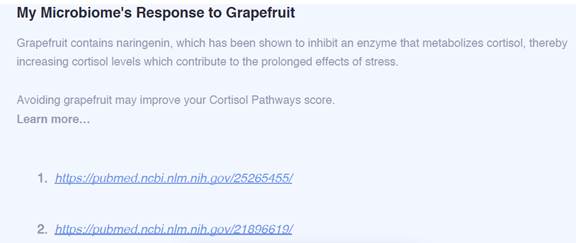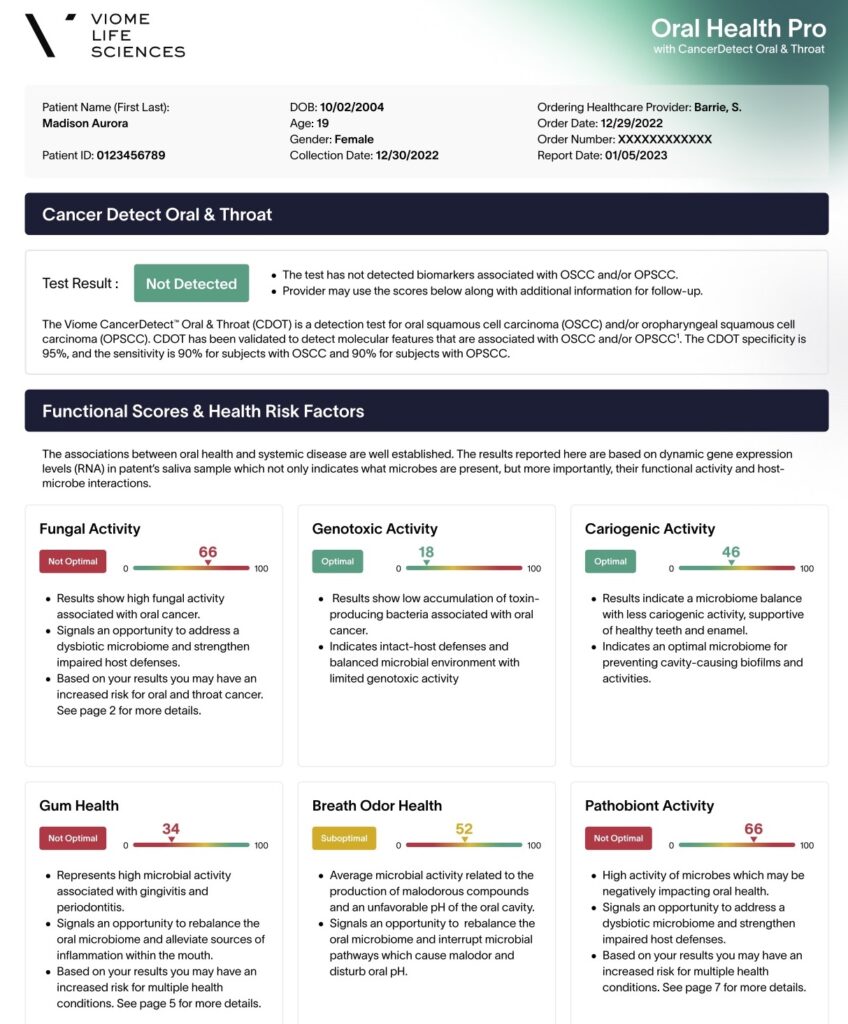I graduated from NYU College of Dentistry in 1978, over 45 years ago. For the last 10 years my focus has been mostly as a “dry-fingered” Dentist, although I still dabble occasionally in the trenches to try out new products and techniques and treat some stubborn family members who still believe these 69-year-old hands and eyes are worthy of entrusting their care. My time is spent advising startups in the Dental field, acting as Chief Dental Officer for two companies with promising interventions for preventing systemic diseases with oral origins and evaluating promising startups as a Venture Partner for an oral healthcare specific venture capital firm.
My physical health, age adjusted, is better than ever. I experience much less lower back pain than during my 35 years of active clinical practice, I’m in better emotional health, have a terrific balance between work, grandchildren, golf, bridge, and of course time with my spouse, Karen. In December we will be married 44 years, and I am thinking of reenacting the Ickey Woods Shuffle from the well-known Geico commercial at that very occasion…it starts in a dental office! https://www.youtube.com/watch?v=Z5U85N-xVvA
With the stress of running a daily practice gone and my work performed mostly virtually from home our relationship has never been better.
Maintaining a work life balance and preserving family time has always been a priority for me. I decided early on to not be an “employee” of insurance companies and opted for a full fee for service practice and after my first 15 years in practice I reduced clinical time to a maximum of four days per week. A home-based practice enabled me to always have dinner with the family and engage with our four children after work and reduced sleep requirements allowed me to work in the office downstairs after everyone went to sleep. When I convinced my wife to leave her practice of Psychiatry and come work in our home office as head of non-clinical affairs, there was staff trepidation initially at the prospect of working with the “boss’s wife”, but her skillset reaped immediate benefits. She immediately identified a toxic employee whom we removed, and I soon noticed smiling faces and a new appreciation for teamwork in our office. Monthly office meetings, featuring the firing of one patient per meeting, also improved staff morale and enhanced benefits and salary packages allowed us to retain many team members for decades.
As I think back to those clinical years and chat with colleagues about them, we shared unhealthy behaviors common to practicing Dentists. Emergencies and overbooked schedules can lead to short or non-existent lunch and other breaks, resulting in rushing meals during the day, indigestion, unhealthy food choices and generally high stress levels which often carry over into family life after clinical hours. Throw in the financial stress of reduced fees from PPO participation, collection difficulties, patients who refuse recommended treatment plans, the occasional negative online review and staffing difficulties, and the life of a Dental Professional can be quite challenging.
In my post clinical years, I have focused on trying to improve things in the profession for my colleagues, through the advancement of technologies to make practice more efficient, enjoyable and profitable, by advising individual colleagues and group practices on methods for becoming less reliant on insurance and by delegating many of the tasks in the office to help reduce stress and allow professionals to focus on clinical work.
My ultimate work objective at this point in my life is to bring Dentistry back into the profession of medicine as a primary care specialty through the advancement of knowledge of the oral-systemic connection. One company, Viome, that I have been an advisor for over two years for and was named the Chief Dental Officer at the start of 2023, is at the forefront for game changing the way people may view their Dental appointments. I believe this starts with the Dental Professional embracing the technology for their own health and well-being and after seeing the improvement in their own physical and emotional health, they will be in a position to pass on this wellness improvement to patients in what will not only improve patients’ health, but also raise their view of their Dental Team as primary care practitioners all the while improving the bottom line for the Dental Office.
As you read this article, early adopting Dental professionals and key opinion leaders in the profession are among the first to receive and try out for themselves Viome’s Oral Health Pro with Cancer Detect. For the first time practitioners will have a simple salivary test available that can detect oral and throat squamous cell carcinoma even before the appearance of any red or white spots or growths or patient awareness with a 95% degree of specificity and 90% degree of sensitivity.
In addition, Dentists will get a deep dive into patient risks for systemic and oral diseases with six detailed category reports including caries activity, periodontal activity, fungal activity, pathobionts, genotoxic activity and breath odor health. Experiencing this test ourselves will supercharge integration into our practices as well as help us pinpoint weaknesses in our own health, which will drive the passion to introduce this technology.
While the Oral Health Pro with CDOT is new to the Dental Profession, Viome’s Full Body Intelligence (FBI) Test has been around for 5 years and has been utilized over 500,000 times and has been available direct-to-consumers. The kit allows the user to collect a small sample of blood from a finger lancet as well as a stool sample, and recently added a saliva sample to the FBI but doesn’t give the detail that professionals get from the Oral Health Pro or the Cancer Detect. When I did my first FBI over a year ago, I received a PDF document that was over 100 pages long explaining conditions that were suboptimal in my body based on gut microbes and mRNA meta transcriptomics. These suboptimal pathways included breath odor, oral sulfide production pathways, LDL cholesterol pathways, Cortisol pathways, lactic acid pathways, cellular and energy efficiency, oxalate metabolism pathways, salt stress pathways, mitochondrial health, energy production pathways, and immune system activation. On the positive side, the report also told me what was optimal, including inflammatory activity, vascular health, kidney-heart health, cavity promoting pathways, vitamin D pathways, renin-angiotensin pathways, serotonin promoting microbes, immune system health, inflammation response, oral active microbial diversity, heart and metabolic health, butyrate production pathways, methane gas production pathways, cellular stress and cellular senescence. Another bunch of pathways fell into the average category indicating some improvement needed but not sub optimal.
Viome then works with the user in two ways to improve their health. The initial report also includes a comprehensive list of commonly ingested foods and divides each into four categories for the user: superfoods, enjoy foods, minimize foods and avoid foods. Detailed reasons are given regarding why each food falls into each category. For example, grapefruit is on my personal list as an avoid food, but it may not be on yours! Viome cites the following reason for avoiding grapefruit (for me): grapefruit contains naringenin, which has been shown to inhibit an enzyme that metabolizes cortisol, thereby increasing cortisol levels which contribute to the prolonged effects of stress. If I want to read more about this, Viome also provides links to articles that support their recommendations.

Many recommendations to avoid certain foods like red meat, cheese, eggs, etc. are all focused on improving my LDL cholesterol pathways and some are temporary recommendations such as avoiding raw tomatoes and bell peppers for one month due to the presence of particular viruses found in the testing that are associated with those vegetables. I followed the recommendations partially for six months and recently retested. Many of my scores improved resulting in some changes to recommended foods and foods to avoid or minimize. I also experienced notable increase in energy, improved sleep and reduced stress. In March I also undertook phase two of Viome’s program which is customized supplement and probiotics, tailored to what my system needs, no more, no less. It takes the guesswork out of going down the aisles at the big box pharmacy chains and randomly purchasing various supplements that you think might benefit you or which your friend swears by. Viome ships these to me monthly in daily packets of 8 supplements taken morning and night and a powder which I add daily to my beverage of choice.
Viome has now taken that same approach used successfully in evaluating the gut microbiome and improving overall health through dietary modification and custom supplements to the oral cavity. As I mentioned earlier, Dentists now have the ability to detect oral and throat cancer earlier than ever before. As we know, early detection is the key for long term survival and preserving quality of life for those afflicted, who often have to deal with disfiguring surgery that interferes with their ability to taste, chew and speak and leaves them with a variety of other side effects including dry mouth and extensive reconstruction. This feature alone makes it worthwhile for every Dental professional to test themselves and as practitioners entrusted with optimizing the health of our patients it is incumbent on us to test every at-risk patient in our practice. Who are at risk individuals for oral and throat cancer? At one time we thought those over age 50 or those who were tobacco or alcohol users had the highest risks for oral cancer, but now one of the leading culprits responsible for new cases of oral cancer is HPV infection, which is sexually transmitted, widening the audience of at-risk individuals to the majority of patients in our practice. It won’t be long before this test is a standard of care.
Beyond detecting oral and throat cancer, the Oral Health Pro test does so much more. As I think back to my last physical examination with my primary care practitioner, a portion of the time was spent hands on, listening to my heart and chest, testing cranial nerves, EKG and blood pressure checks, etc., but the largest part of the visit was spent reviewing my blood work. If my blood work showed elevated cholesterol, interventions recommended might include dietary changes and prescription statins. As Dental Professionals, we now have the ability to have meaningful conversations with our patients regarding the information obtained from their saliva, similar to the information our physicians have obtained from our blood. In doing so, we enhance our image as primary care professionals and have the tools to help us help our patients take better care of themselves by improving their oral microbiome and periodontal health.
The sample report below shows how even in the case of a negative oral cancer detect finding, other sub optimal scores can pinpoint areas of concern in the mouth which the Dental professional can address in a variety of ways.

The ability to improve wellness in ourselves and in our patients should be something we all strive for. A successful bottom line and a happy life starts with personal wellness, and only then can we truly help our patients achieve the wellness we all committed to giving them when we joined this profession.




